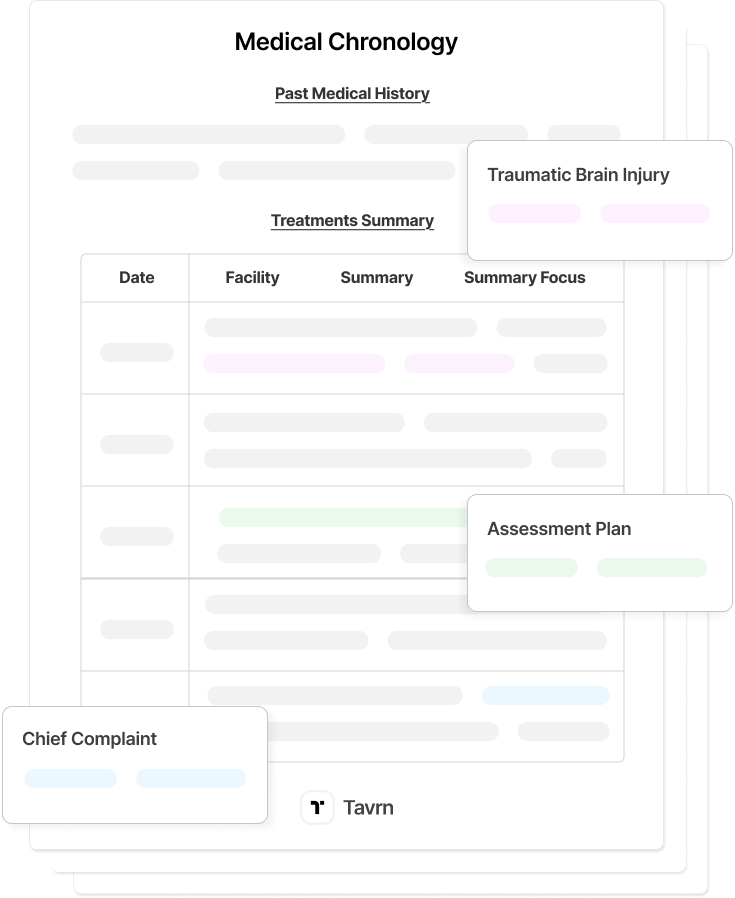Anderson v. Monsanto Company culminated in May 2025 with a $611 million verdict upheld by the Missouri Court of Appeals, representing the largest upheld Roundup verdict to date. The Missouri Supreme Court's October 2025 decision to decline review leaves intact this landmark judgment, establishing critical precedent for failure-to-warn liability in product liability cases.
The case involved three Missouri plaintiffs (Daniel Anderson, Jimmy Draeger, and Valorie Gunther) who developed non-Hodgkin's lymphoma after extensive Roundup exposure spanning decades of agricultural and residential use.
The verdict breakdown included $61 million in compensatory damages and $550 million in punitive damages, with the Missouri Court of Appeals specifically rejecting Monsanto's FIFRA preemption arguments and affirming jury findings on corporate knowledge and failure to warn.
This analysis examines Anderson's procedural developments, strategic implications, and broader impact on the ongoing Roundup litigation landscape, which encompasses thousands of consolidated federal actions in MDL 2741 and parallel state court proceedings nationwide.
Factual Foundation & Scientific Context
The Anderson plaintiffs represented diverse exposure patterns characteristic of broader Roundup litigation, with the lead plaintiff documenting extensive occupational glyphosate exposure through commercial agricultural applications.
Co-plaintiffs included residential users who applied retail Roundup formulations for lawn and garden maintenance, creating the comprehensive exposure profile that strengthened causation arguments.
The case leveraged an established scientific foundation supporting glyphosate-lymphoma causation.
- The International Agency for Research on Cancer's 2015 classification of glyphosate as "probably carcinogenic to humans" (Group 2A) provided a regulatory foundation.
- Epidemiological evidence included the Zhang et al. (2019) meta-analysis showing a meta-relative risk of 1.41 (95% CI: 1.13–1.75) for the highest exposure categories.
Critical to Anderson's success was the extensive use of internal Monsanto documents obtained through coordinated discovery across MDL 2741 proceedings.
These "Monsanto Papers" revealed alleged ghostwriting practices and corporate communications discussing "keeping the cost down by us doing the writing and they would just edit & sign their names" regarding research designed to counter IARC findings, providing compelling evidence of corporate knowledge and concealment.
Trial Proceedings & Strategic Elements
The Anderson trial proceeded in the Missouri state court under product liability law, avoiding the federal court complications that have challenged other Roundup cases.
Missouri's favorable plaintiff venue provided strategic advantages, including broad discovery rules and punitive damages frameworks that supported the substantial award (Missouri applies a Daubert-aligned expert witness standard under RSMo § 490.065 (2017), comparable to Federal Rule 702).
Plaintiff counsel assembled coordinated expert testimony incorporating:
- Epidemiological causation evidence.
- Clinical oncological opinions linking glyphosate exposure to specific lymphoma diagnoses.
- Regulatory experts addressing warning adequacy under Missouri failure-to-warn standards.
This comprehensive expert framework survived vigorous Daubert challenges under Missouri's expert witness standard.
Defense strategy centered on challenging general and specific causation through competing expert testimony, emphasizing EPA regulatory approval and alternative causation theories.
Internal corporate documents, however, undermined defense arguments about adequate warnings and corporate knowledge, with communications revealing awareness of potential risks and discussions of regulatory strategy to maintain market approval.
The jury returned the $611 million verdict with explicit findings supporting both compensatory damages for medical expenses and lost wages, as well as substantial punitive damages based on corporate conduct and failure to warn.
Appellate Analysis & Precedential Impact
Following the trial court's decision, Monsanto appealed the verdict on multiple grounds, and the Missouri Court of Appeals established several critical precedents for ongoing Roundup litigation.
The appellate court's analysis addressed three key legal issues:
- Causation evidence admissibility: The court affirmed trial court decisions admitting epidemiological and clinical expert testimony under Missouri's Daubert-aligned expert witness standard, emphasizing the reliability of peer-reviewed causation studies.
- Punitive damages constitutional limits: The court applied Missouri constitutional analysis rather than federal due process limitations, finding the 9:1 ratio between punitive and compensatory awards supported by evidence of corporate misconduct and the need for adequate deterrence given Monsanto's substantial revenue from glyphosate products.
- Federal preemption scope: Most significantly for national litigation, the court's FIFRA preemption analysis aligned with Ninth and Eleventh Circuit precedents rejecting preemption arguments, while explicitly disagreeing with Third Circuit authority finding federal preemption of state labeling claims. This creates a strengthened circuit split likely to require Supreme Court resolution.
The court affirmed the $611 million judgment, with the court explicitly rejecting federal preemption arguments under FIFRA, finding that state failure-to-warn claims complement rather than conflict with federal labeling requirements.
Strategic Implications for Roundup Litigation
The appellate decision creates several strategic considerations for ongoing and future cases.
1. Enhanced Settlement Leverage
The appellate court decision provides substantial leverage for ongoing settlement negotiations across MDL 2741 and state court proceedings.
While Bayer reports resolving 131,000 of approximately 192,000 claims as of July 2025, tens of thousands of claims remain active, with Anderson establishing a high-water mark for potential verdict exposure.
Settlement dynamics now incorporate Anderson's $611 million benchmark, particularly for cases involving similar exposure patterns and strong causation evidence. By letting the verdict stand, the Supreme Court's decision eliminates uncertainty about Missouri precedent while providing concrete valuation metrics for settlement discussions.
2. Expert Witness Standards Evolution
Anderson's expert testimony framework offers guidance for practitioners developing causation evidence in pending cases. By successfully integrating multiple expert disciplines, the case provides a template for comprehensive case preparation:
- Epidemiological evidence: Meta-analyses establishing statistical associations between glyphosate exposure and non-Hodgkin lymphoma.
- Clinical diagnostic opinions: Oncological experts linking specific patient exposures to lymphoma diagnoses through differential etiology.
- Regulatory knowledge evidence: Expert testimony regarding warning adequacy and industry knowledge standards.
The case demonstrates effective responses to recent federal court restrictions on expert testimony, particularly the 2025 Ninth Circuit decision in Engilis v. Monsanto, requiring more stringent differential etiology analysis.
Anderson's experts handled similar challenges through comprehensive medical record review and scientifically grounded alternative causation analysis.
3. Federal-State Coordination Strategy
Anderson illustrates the advantages of strategic venue selection between federal MDL proceedings and state court alternatives.
While MDL 2741 provides coordinated discovery benefits and consistent pretrial rulings, state courts may offer different procedural frameworks and punitive damages provisions.
The case supports coordinated litigation strategies that utilize MDL discovery benefits while pursuing favorable state venues for trial proceedings, though such approaches require careful coordination to avoid duplicative efforts and conflicting rulings.
Broader Industry Impact & Risk Assessment
Beyond individual case strategy, Anderson's outcome carries significant implications for corporate practices and regulatory dynamics.
1. Corporate Risk Management
Despite Bayer's substantial settlement programs, Anderson's sustained $611 million award demonstrates that significant liability exposure persists.
By creating precedent for punitive damages awards based on internal corporate communications and failure-to-warn theories, the decision requires enhanced corporate risk management protocols for companies with pending product liability exposure.
The case validates discovery strategies focused on internal corporate documents and regulatory communications, emphasizing the importance of comprehensive document retention and litigation hold procedures for companies facing mass tort exposure.
2. Regulatory Implications
The verdict's survival reinforces the ongoing tension between EPA regulatory approval and state tort liability, with Anderson's court explicitly finding that federal pesticide registration does not preempt state warning requirements. This regulatory conflict continues to drive litigation regardless of federal approval status.
In response to ongoing liability exposure, Bayer's strategic transitions toward alternative glyphosate formulations for residential markets reflect corporate adaptation, demonstrating how substantial verdicts influence product development and market strategy beyond individual case resolution.
Future Litigation Outlook
Anderson's precedential impact extends beyond Missouri through its treatment of expert evidence, internal corporate documents, and federal preemption arguments.
- The decision strengthens plaintiff positions in pending state court cases and provides appellate precedent supporting causation theories and warning adequacy standards.
- Supreme Court intervention appears increasingly likely through pending petitions in Monsanto Co. v. Durnell (No. 24-1068) and Monsanto Co. v. Salas, with Anderson contributing to the circuit split requiring high court resolution of FIFRA preemption scope.
Continued remands from MDL 2741 proceedings will generate additional trial opportunities, with Anderson's verdict influencing jury expectations and settlement negotiations across multiple jurisdictions.
Cases involving similar exposure patterns and strong causation evidence may reference Anderson's outcome in demand calculations and trial strategy development.
Key Practitioner Takeaways
Anderson offers the following actionable guidance for practitioners across different practice areas.
For Plaintiff Counsel:
- Venue selection: Carefully evaluate state court alternatives to federal MDL proceedings for cases with strong facts and advantageous state procedural frameworks.
- Expert coordination: Develop comprehensive causation testimony combining epidemiological, clinical, and regulatory evidence across multiple specialties.
- Document strategy: Prioritize internal corporate communications discovery to establish knowledge and concealment theories.
- Settlement timing: Leverage Anderson's precedent in negotiations, particularly for similar exposure patterns and corporate conduct evidence.
For Defense Counsel:
- Preemption analysis: Conduct jurisdiction-specific FIFRA preemption research, given the evolving circuit split and Anderson's rejection of federal preemption
- Document management: Implement enhanced retention protocols and litigation hold procedures for corporate communications
- Expert defense: Challenge causation testimony through comprehensive medical record review and alternative causation evidence development
- Risk assessment: Evaluate settlement versus trial decisions, incorporating Anderson's verdict benchmark and appellate precedent
For Coverage Counsel:
- Policy analysis: Review coverage implications for punitive damages awards under Missouri and similar state frameworks that may differ from federal approaches
- Risk evaluation: Assess exposure multiples based on Anderson's precedent for cases with comparable facts and corporate conduct evidence
- Settlement authority: Ensure adequate authorization reflecting the potential verdict exposure demonstrated by this case and its precedential impact on similar matters
In Summary
The $611 million Anderson verdict represents a watershed moment in Roundup cancer litigation, establishing critical precedent on FIFRA preemption, expert witness standards, and punitive damages frameworks.
As the largest upheld Roundup award to date, it provides concrete valuation benchmarks for settlement negotiations while demonstrating the evidentiary strength required for successful outcomes.
With Supreme Court review of preemption issues likely forthcoming and thousands of cases pending in MDL 2741, Anderson's influence will shape mass tort litigation strategy for years to come.






.webp)
.webp)




















































